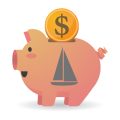Setting Your Early Retirement Goals
Before you start mapping out your path to early retirement, it’s important to get crystal clear on what early retirement really means for you. For some, it might be leaving the nine-to-five grind at 50; for others, it could mean financial independence by 40 and the freedom to pursue passion projects or travel. The key is to define your personal vision of early retirement—not just an age, but a lifestyle. Take a close look at the kind of life you want to live once you retire early. Do you dream of moving to a quieter city, spending more time with family, or traveling around the country in an RV? Maybe you want to start a small business or volunteer full-time. Assessing your desired retirement lifestyle will help you estimate how much money youll need and give direction to your savings plan. Once you have a vision, set a target retirement age that realistically aligns with your aspirations and current financial situation. This gives you a concrete goalpost to work toward and shapes every step of your early retirement planning journey.
Crafting a Realistic Savings Plan
When aiming for early retirement, building a tailored savings strategy is crucial. A one-size-fits-all approach rarely works—your lifestyle, goals, and current finances all play a major role. Here’s how to develop a practical plan that maximizes your savings, cuts unnecessary spending, and boosts your income so you can retire sooner than most Americans.
Start With Budgeting: Know Where Your Money Goes
The first step in any solid savings plan is understanding your cash flow. List all sources of income and track every expense, no matter how small. This gives you a clear picture of where your money is actually going. Use budgeting apps or spreadsheets to simplify the process.
| Monthly Income | Fixed Expenses | Variable Expenses | Savings/Investments |
|---|---|---|---|
| $5,000 | $2,000 (Rent/Mortgage) | $600 (Dining Out, Entertainment) | $1,200 |
| $400 (Utilities) | $300 (Shopping) | ||
| $500 (Insurance) | $200 (Miscellaneous) |
Cutting Expenses: Trim the Fat Without Sacrificing Joy
After breaking down your expenses, identify areas where you can cut back. Focus on recurring costs or impulse purchases that don’t bring lasting value. Consider options like meal prepping instead of frequent takeout, canceling unused subscriptions, or shopping smarter by using coupons and cashback deals. Every dollar saved gets you closer to your early retirement goal.
Maximize Your Income: Think Beyond Your Day Job
If you want to accelerate your timeline, look for ways to increase your income streams. This could mean negotiating a raise at work, starting a side hustle, freelancing online, or investing in real estate or the stock market. Even part-time gigs or selling unused items around your home can add up over time.
Sample Extra Income Ideas:
- Freelance work (writing, graphic design, tutoring)
- Rideshare driving or food delivery apps
- Online marketplaces (Etsy, eBay)
- Short-term rentals (Airbnb)
- Stock photography or digital products
Key Takeaway:
A realistic savings plan involves more than just stashing away what’s left at the end of each month. Be intentional—track your money closely, cut unnecessary costs without feeling deprived, and find new ways to earn. The more disciplined and creative you are now, the sooner you’ll be able to enjoy the freedom of early retirement.
![]()
3. Understanding Investment Tools and Strategies
If you’re serious about planning for early retirement, understanding your investment options is crucial. The right mix of accounts and strategies can help your money grow faster, giving you the freedom to retire on your own terms—sooner rather than later.
Explore Your Retirement Account Options
Start with the basics: 401(k) plans are a staple for many Americans, especially if your employer offers matching contributions. This match is essentially free money, so always contribute enough to get the full benefit. Traditional IRAs and Roth IRAs are also powerful tools. While both offer tax advantages, Roth accounts allow your investments to grow tax-free—a huge plus if you expect to be in a higher tax bracket during retirement.
The Role of Brokerage Accounts
If you plan to retire before age 59½, it’s smart to consider taxable brokerage accounts. Unlike retirement-specific accounts, these don’t have early withdrawal penalties, giving you flexibility for withdrawals before traditional retirement age.
Risk Tolerance and Time Horizon Matter
Your personal risk tolerance—how comfortable you are with market ups and downs—and your time horizon—the number of years until you want to retire—should drive your investment choices. Younger investors can typically take on more risk with stocks since they have time to recover from market downturns. As you approach your target retirement date, gradually shift toward safer assets like bonds or cash equivalents to protect what you’ve built.
The bottom line? Diversify your investments across multiple account types and asset classes. Stay focused on your long-term goals while keeping an eye on fees, taxes, and withdrawal rules. This strategic approach will help you build wealth efficiently—and reach early retirement sooner than you might think.
Maximizing Retirement Accounts and Tax Benefits
When it comes to early retirement, making the most of tax-advantaged accounts is a game-changer. These accounts don’t just help you save; they boost your savings by minimizing taxes and sometimes even giving you free money through employer matches. Here’s how you can optimize your retirement savings strategy for faster results.
Tax-Advantaged Accounts: The Basics
In the U.S., there are several key retirement accounts that come with significant tax benefits:
| Account Type | Tax Benefit | Contribution Limits (2024) |
|---|---|---|
| 401(k) | Pre-tax contributions lower taxable income; tax-deferred growth | $23,000 (plus $7,500 catch-up if 50+) |
| Roth IRA | Post-tax contributions; qualified withdrawals are tax-free | $7,000 (plus $1,000 catch-up if 50+) |
| Traditional IRA | Pre-tax or post-tax (depending on income); tax-deferred growth | $7,000 (plus $1,000 catch-up if 50+) |
| Health Savings Account (HSA) | Triple tax advantage: pre-tax contributions, tax-free growth & withdrawals for medical expenses | $4,150 individual / $8,300 family (plus $1,000 catch-up if 55+) |
Employer Matches: Don’t Leave Money on the Table
If your employer offers a 401(k) match, contribute at least enough to get the full match. This is essentially free money added to your retirement fund—think of it as an instant return on your investment. For example, if your employer matches up to 5% of your salary and you earn $60,000 per year, that’s an extra $3,000 in your account annually just for contributing.
Cumulative Impact of Employer Matches Over Time
| Annual Salary | Employer Match (%) | Extra Savings/Year | Savings After 10 Years (w/o growth) |
|---|---|---|---|
| $60,000 | 5% | $3,000 | $30,000+ |
| $80,000 | 6% | $4,800 | $48,000+ |
| $100,000 | 4% | $4,000 | $40,000+ |
Catch-Up Contributions: Supercharge Your Savings After 50
If you’re age 50 or older and planning to retire early, catch-up contributions let you save more than younger workers each year. These higher limits apply to IRAs and 401(k)s (and even HSAs after age 55), helping you close any gaps in your savings plan as retirement approaches. Even a few extra years of maxing out these contributions can make a substantial difference in your nest egg.
Key Takeaway:
The path to early retirement is smoother when you maximize every available advantage. Contribute as much as possible to tax-advantaged accounts, always grab your employer match, and use catch-up contributions once eligible. Every dollar invested today not only grows but also potentially reduces your current tax bill—bringing early retirement closer within reach.
5. Controlling Lifestyle Inflation
One of the biggest threats to early retirement is lifestyle inflation, also known as lifestyle creep. This happens when your spending increases as your income grows, making it harder to save aggressively for early retirement. To stay on track with your goals, its crucial to keep this in check.
Identify Your True Priorities
Start by getting clear on what truly matters to you. Ask yourself whether new purchases are actually adding value or just filling a temporary want. By focusing your spending on meaningful experiences—like travel, learning new skills, or time with loved ones—you avoid falling into the trap of accumulating more stuff that doesn’t increase long-term happiness.
Create a Conscious Spending Plan
Instead of blindly increasing your expenses with every raise or bonus, set a conscious budget aligned with your values and goals. Allocate windfalls directly toward your retirement savings or investments before you even have a chance to spend them. Automating these contributions can help you resist temptation and make saving effortless.
Avoid the Comparison Game
Social media and peer pressure can push you to match others’ lifestyles, but remember, their priorities may not align with yours. Stay focused on your unique path and celebrate progress toward your own financial independence instead of keeping up with the Joneses.
Embrace Frugal Habits
Frugality isn’t about deprivation—it’s about intentionality. Practice habits like meal planning, DIY home projects, or enjoying free local events. These choices reduce unnecessary spending and free up more cash for your retirement nest egg without sacrificing quality of life.
Regularly Review Your Expenses
Conduct periodic check-ins to see if any costs have crept up unnoticed. Cancel unused subscriptions, renegotiate bills, and challenge yourself to find lower-cost alternatives for recurring expenses. This keeps your budget lean and ensures every dollar works toward your early retirement dream.
By managing lifestyle inflation proactively, you maximize your savings rate while still enjoying life along the way—making early retirement a realistic and rewarding goal.
6. Planning for Healthcare and Unexpected Costs
When you’re planning for early retirement, it’s easy to focus on saving and investing, but preparing for healthcare expenses and unexpected costs is just as crucial. Health insurance can be a major expense before you’re eligible for Medicare at age 65, so it’s smart to explore all your options. Consider researching marketplace plans under the Affordable Care Act, high-deductible health plans with Health Savings Accounts (HSAs), or even COBRA coverage if you’re leaving a job.
Don’t Overlook Healthcare Inflation
Medical costs tend to rise faster than general inflation, and early retirees often underestimate how much they’ll need. Try using online calculators to estimate future healthcare needs, factoring in premiums, out-of-pocket expenses, and possible long-term care. It’s also wise to regularly review and adjust your estimates as you get closer to your retirement date.
Build a Solid Emergency Fund
Life is unpredictable—job loss, home repairs, or family emergencies can throw off even the best-laid plans. Having an emergency fund with at least six to twelve months of living expenses gives you a safety net so you won’t have to tap into your retirement savings prematurely. Keep this fund liquid in a high-yield savings account or money market account for quick access.
Smart Insurance Choices Matter
Beyond health insurance, look into disability and long-term care insurance to protect against scenarios that could derail your financial independence. Review your coverage annually and make adjustments as your situation changes, especially after big life events like marriage, divorce, or the birth of a child.
By prioritizing healthcare planning and preparing for unforeseen expenses, you give yourself peace of mind—and a much greater chance of enjoying your early retirement without financial stress.
7. Transitioning to Early Retirement
Developing a Solid Exit Plan
As you approach your early retirement goal, one of the most critical steps is creating a well-structured exit plan for your career. This means more than just giving notice at your job; it’s about timing your departure to maximize benefits, wrapping up ongoing projects responsibly, and ensuring a smooth handoff if necessary. Consider negotiating part-time or consulting arrangements if you’d like a gradual transition, which can help maintain cash flow and keep you engaged during the adjustment period.
Building Sustainable Withdrawal Strategies
Early retirees face a unique challenge: making their savings last much longer than those who retire at traditional ages. To avoid outliving your nest egg, it’s vital to develop sustainable withdrawal strategies. The 4% rule is a common starting point, but you may need to adjust based on market conditions, inflation, and personal needs. Consider working with a financial planner to create a dynamic withdrawal plan that allows for flexibility in lean years while taking advantage of good market returns when possible.
Staying Flexible with Post-Retirement Pursuits
Your vision for early retirement may evolve over time. Staying flexible with both your lifestyle and income streams can help ensure long-term satisfaction and financial stability. Explore side hustles, part-time gigs, or passion projects that generate income while keeping you mentally engaged. Many early retirees find fulfillment in freelancing, consulting, or even launching small businesses aligned with their interests. Remember, flexibility is key—be open to adjusting your plans as opportunities and challenges arise.
Embracing Change with Confidence
Transitioning to early retirement is as much about mindset as it is about money. Be proactive in seeking new routines and social connections to support your well-being. Stay informed about healthcare options, tax implications, and investment strategies relevant to retirees. By planning thoroughly and staying adaptable, you’ll set yourself up for a rewarding and sustainable early retirement journey.


